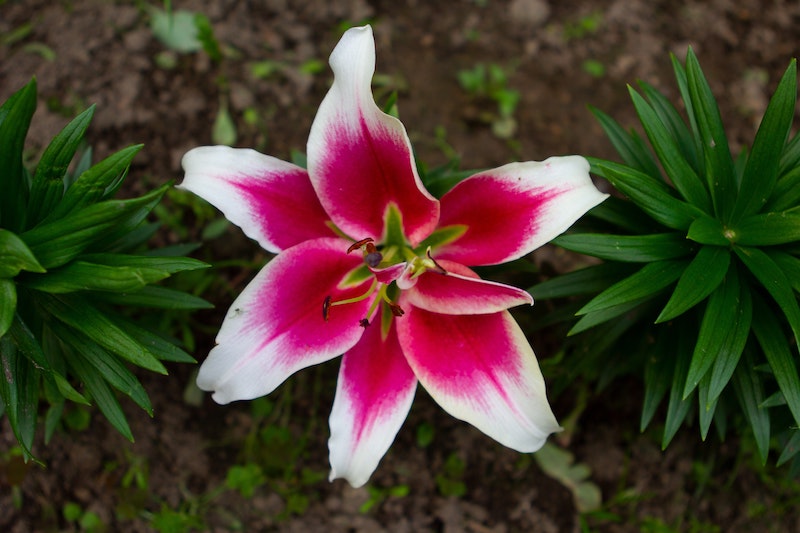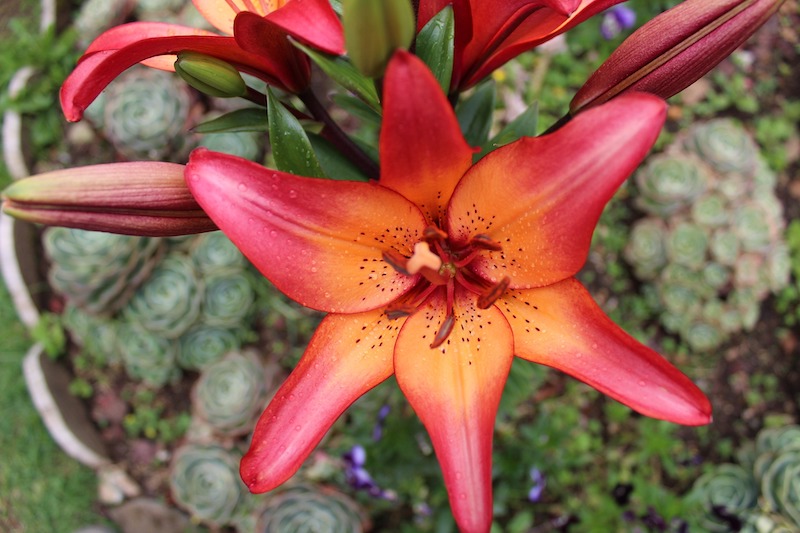Lilies are a popular choice for gardens and landscapes due to their beautiful, fragrant flowers. When planting lilies, choose a location with well-draining soil and plenty of sunlight. Lilies also prefer slightly acidic soil, so you may need to add some sulfur or peat moss before planting. Mix in some compost or well-rotted manure to provide the lilies with the nutrients they need to grow and thrive.
When planting, space the bulbs at least 6 inches apart and plant them at a depth of about 6 to 8 inches. If the soil is dry, water the bulbs after planting. Once sprouts appear, water plants regularly throughout the growing season. With proper care, your lilies should bloom for years to come.

What You Need To Plant Lilies
- Lily bulbs
- Shovel or trowel
- Compost, well-rotted manure, or other organic matter
- Watering can or hose
Where to Plant Lilies
Lilies prefer a location with well-draining soil and plenty of sunlight. They can tolerate some shade, but they generally bloom best with at least 6 hours of direct sunlight per day. Plant dwarf varieties toward the front of a border, and taller varieties toward the middle where they won't be overshadowed by taller plants. Lilies are wonderful planted in a border or along a pathway, where their fragrant flowers can be fully appreciated. If you're planting lilies in a pot or container, ensure the container has good drainage and use a well-draining soil mix.
Lily Spacing
When planting lilies, it's important to space the bulbs at least 6 inches apart. This will give the plants enough room to grow and spread out without competing with each other for light, water, and nutrients. If you're planting a variety of lilies with different mature sizes, consider the size of the mature plants when determining the spacing. For example, you may need to give bigger lilies a little more room to grow than smaller ones. Generally, it's a good idea to follow the spacing recommendations on the back of the bulb package or in the plant information for the specific lilies you're planting. Proper spacing is key to healthy lily growth and beautiful blooms.

Steps To Plant Lilies
Step 1 - Choose a location with well-draining soil and plenty of sunlight for your lilies. Mix in some compost or well-rotted manure to provide the lilies with the nutrients they need to grow and thrive.
Step 2 - Using a shovel or trowel, dig holes for the bulbs that are 6-8 inches deep and at least 6 inches apart.
Step 3 - Place the bulbs in the holes with the pointed end facing upwards. If you're unsure which end is the pointed end, look for the small, flat spot on the bulb – this is the root end and should be placed downwards in the soil.
Step 4 - Carefully fill the holes with soil, without burying the bulbs too deeply or leaving them exposed. Water the bulbs if the soil is dry.
Step 5 - Place a layer of mulch over the soil to help retain moisture and suppress weeds.
Step 6 - Once growth appears, water the lilies regularly throughout the growing season, without over-watering or letting the soil dry out completely.
When to Plant Lilies
The best time to plant lilies depends on the type of lily and the climate in which you live. Generally, it's best to plant lilies in the fall, several weeks before the ground freezes. This gives the bulbs time to establish roots before the winter weather sets in. In climates with harsh winters, you can also plant lilies in the early spring after the threat of frost has passed. As a general rule, it's best to plant lilies in the fall because the cold exposure in winter helps plants produce larger blooms the first year. If you need help determining when to plant lilies in your area, you can check with your local county extension office for specific planting recommendations.

Transplanting Lilies
Transplanting lilies is an excellent way to move them to a new location or to divide an overgrown clump. Lilies transplant best in the fall, preferably a few weeks before the first frost date to allow the bulbs to store as much energy as possible before winter. Carefully dig up the lily bulbs, extracting as much of the root system as possible. Gently shake off excess soil and trim away damaged or diseased roots. Then, choose a new location for the lilies with well-draining soil and plenty of sunlight. Next, dig holes for the lilies that are the same depth as their previous planting site. Once the holes have been dug, place the lily bulbs in the holes with the pointed end facing upwards. Carefully fill the holes with soil, taking care not to bury the bulbs too deeply, and then water.
 |
Author Chris Link - Published 1-27-2023 |
